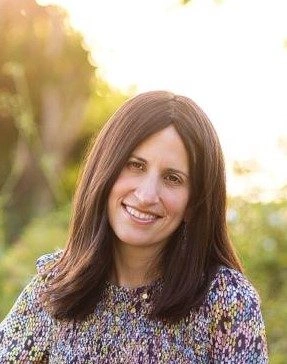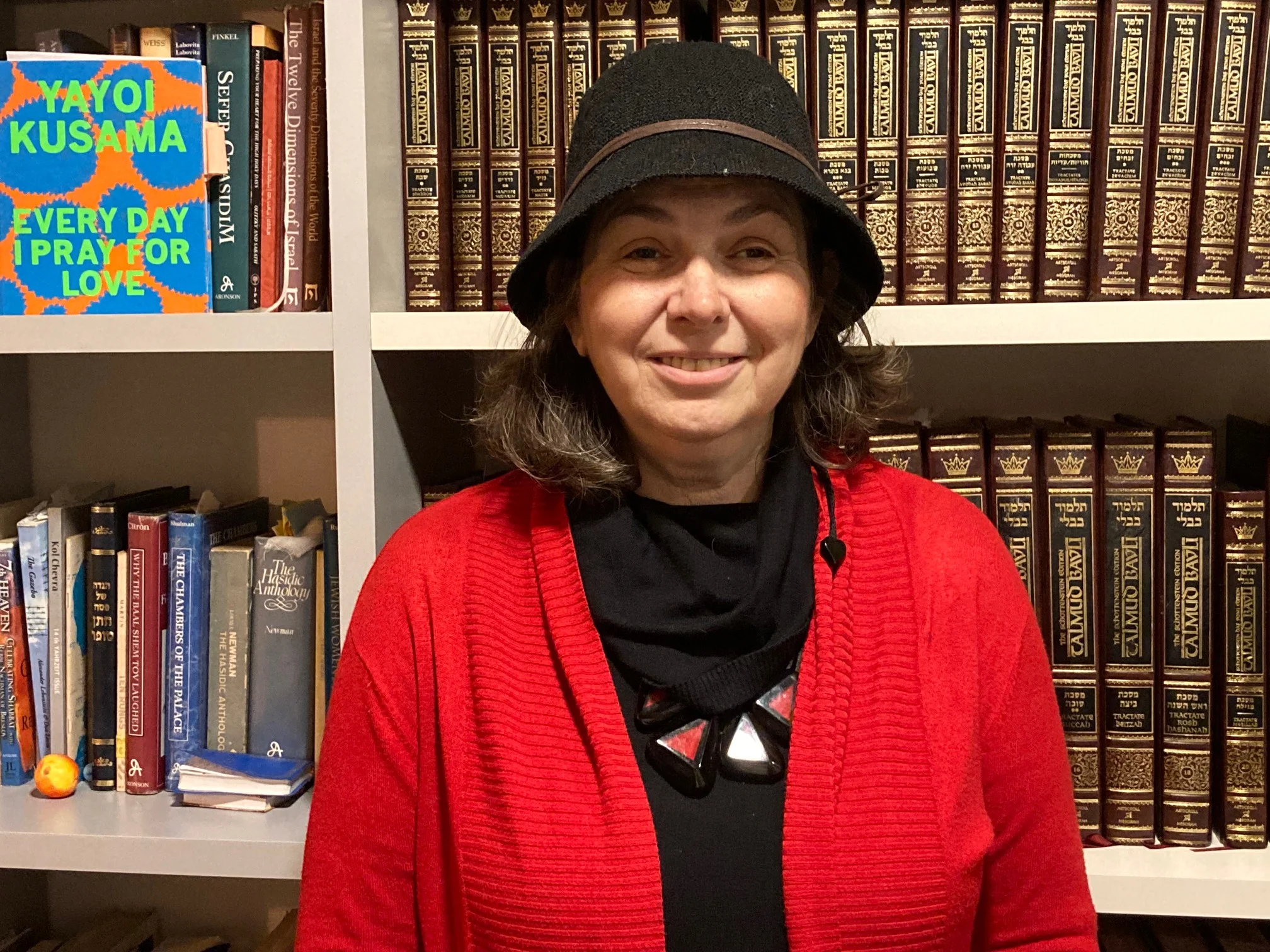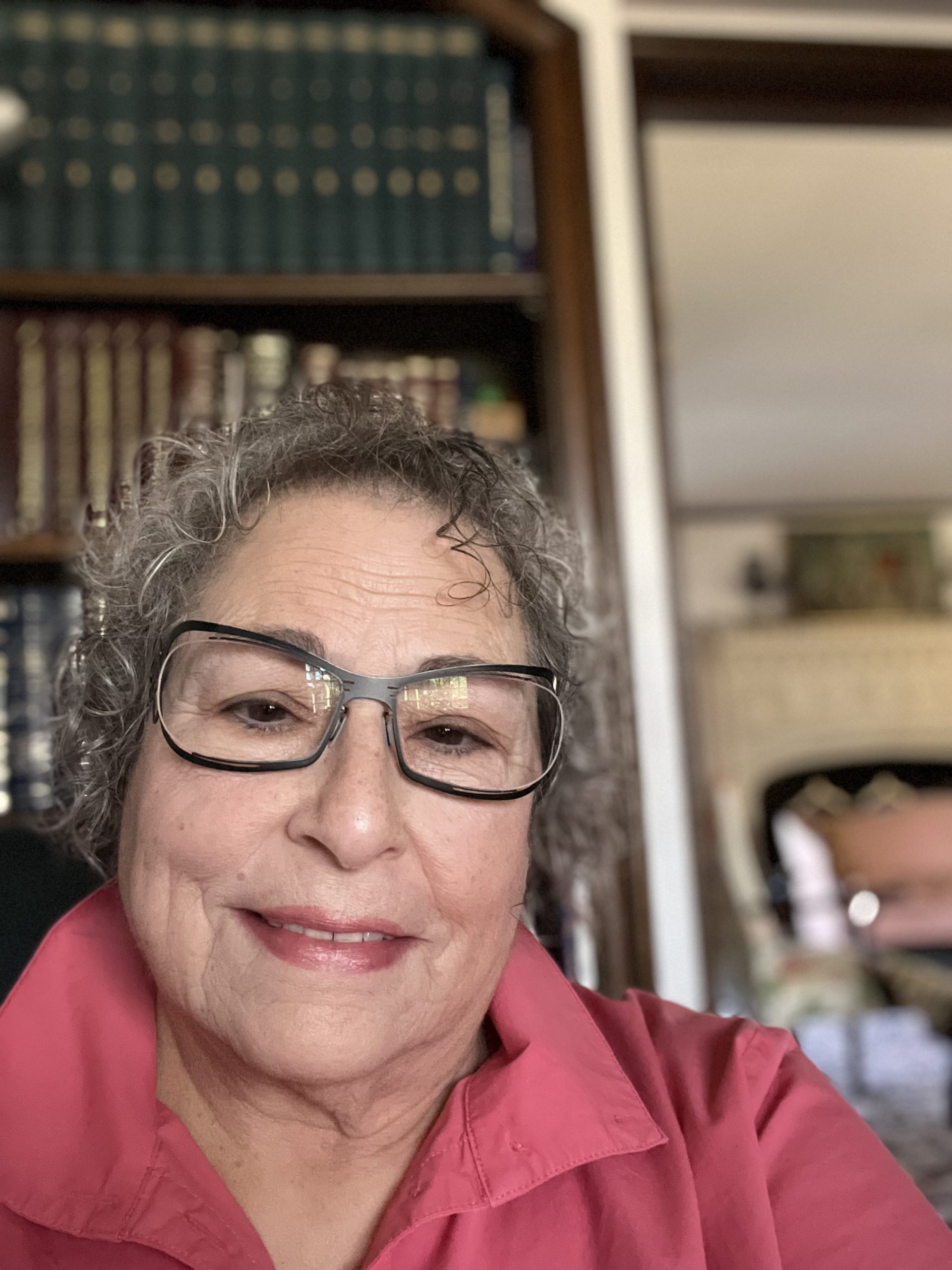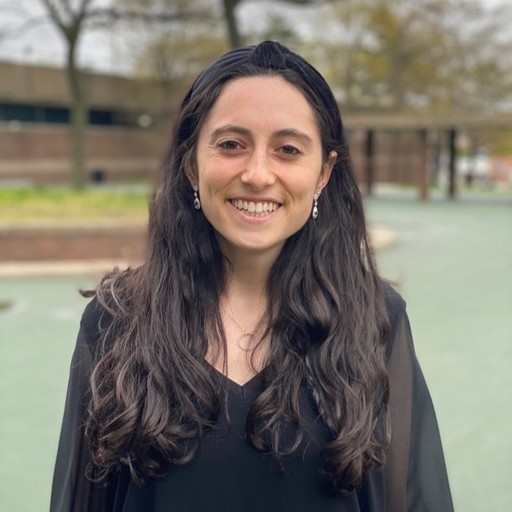Bava Kamma 4
וְלֹא רְאִי הַשֵּׁן – שֶׁאֵין כַּוּוֹנָתוֹ לְהַזִּיק, כִּרְאִי הַקֶּרֶן – שֶׁכַּוּוֹנָתוֹ לְהַזִּיק.
And the defining characteristic [re’i] of the category of Eating, where it is not the objective of the animal to cause damage, is not similar to the defining characteristic of the category of Goring, where the objective of the animal is to cause damage.
וְלָאו קַל וָחוֹמֶר הוּא – וּמָה שֵׁן, שֶׁאֵין כַּוּוֹנָתוֹ לְהַזִּיק – חַיָּיב; קֶרֶן, שֶׁכַּוּוֹנָתוֹ לְהַזִּיק – לֹא כׇּל שֶׁכֵּן? אִיצְטְרִיךְ, סָלְקָא דַּעְתָּךְ אָמֵינָא: מִידֵּי דְּהָוֵה אַעֶבֶד וְאָמָה – עֶבֶד וְאָמָה, לָאו אַף עַל גַּב דְּכַוּוֹנָתָן לְהַזִּיק, אֲפִילּוּ הָכִי פְּטִירִי? הָכִי נָמֵי לָא שְׁנָא.
The Gemara asks: But isn’t it possible to derive Goring from Eating by means of an a fortiori inference: If in a case of Eating, where it is not the objective of the animal to cause damage, its owner is liable, with regard to Goring, where the objective of the animal is to cause damage, should the owner not all the more so be liable? The Gemara answers: Nevertheless, it was necessary for the Torah to state the case of Goring, as it might enter your mind to say that the owner is exempt, just as he is exempt in the case where his slave or maidservant causes damage. When a slave or maidservant causes damage, is it not so that although their objective is to cause damage, even so their owners are exempt from liability; and so too, when one’s animal causes damage, it is no different. To dispel this notion, the Torah explicitly states that one is liable for damage caused by the primary category of Goring.
אָמַר רַב אָשֵׁי: אַטּוּ עֶבֶד וְאָמָה לָאו טַעְמָא רַבָּה אִית בְּהוּ? שֶׁמָּא יַקְנִיטֶנּוּ רַבּוֹ, וְיֵלֵךְ וְיַדְלִיק גְּדִישׁוֹ שֶׁל חֲבֵירוֹ, וְנִמְצָא זֶה מְחַיֵּיב אֶת רַבּוֹ מֵאָה מָנֶה בְּכׇל יוֹם!
Rav Ashi said: Is that to say that in a case where one’s slave or maidservant causes damage there is not a substantial reason to exempt the master? In that case there is concern that perhaps his master will provoke him and in retribution he will go and set fire to another’s stack of grain, and it is found that this slave renders his master liable to pay one hundred maneh, ten thousand dinars, each day. Therefore, there is no basis for the notion that an ox that gores would be exempt just as a slave is exempt, as perhaps, fundamentally, one is liable to pay for damage caused by his slave. A master is exempt from payment to prevent a situation where a slave would exploit that situation to take revenge against his master.
אֶלָּא פָּרֵיךְ הָכִי: לֹא רְאִי הַקֶּרֶן – שֶׁכַּוּוֹנָתוֹ לְהַזִּיק, כִּרְאִי הַשֵּׁן – שֶׁאֵין כַּוּוֹנָתוֹ לְהַזִּיק; וְלֹא רְאִי הַשֵּׁן – שֶׁיֵּשׁ הֲנָאָה לְהֶזֵּיקוֹ, כִּרְאִי הַקֶּרֶן – שֶׁאֵין הֲנָאָה לְהֶזֵּיקוֹ.
Rather, the mishna refutes any possibility to derive the halakhot of Ox from Maveh or Maveh from Ox in this manner: The characteristic of the category of Goring, where the objective of the animal is to cause damage, is not similar to the characteristic of the category of Eating, where it is not the objective of the animal to cause damage, and the characteristic of the category of Eating, where there is pleasure for the animal in the course of its causing damage, is not similar to the characteristic of the category of Goring, where there is no pleasure for the animal in the course of its causing damage.
וְרֶגֶל מַאי? שַׁיְּירֵיהּ?! ״כְּשֶׁהִזִּיק חָב הַמַּזִּיק״ – לְאֵתוֹיֵי רֶגֶל.
According to Rav Yehuda’s explanation of Shmuel’s opinion, among the primary categories of damage caused by an ox, the mishna mentions only Goring and Eating. The Gemara asks: But what of the category of Trampling; did the tanna omit it from the mishna? The Gemara answers: The principle stated in general terms at the end of the mishna: And when a component of any of these categories causes damage, the owner or generator of the component that caused damage is obligated to remit payments of restitution for damage with best-quality land, serves to include the primary category of Trampling.
וְלִיתְנְיֵיהּ בְּהֶדְיָא!
The Gemara asks: But if the intent of the tanna is to teach the primary category of Trampling as well, let him teach it explicitly. Accordingly, Rav Yehuda’s explanation of how Shmuel interprets the mishna is rejected.
אֶלָּא אָמַר רָבָא: תְּנָא שׁוֹר – לְרַגְלוֹ, וּמַבְעֶה – לְשִׁינּוֹ. וְהָכִי קָאָמַר: לֹא רְאִי הָרֶגֶל – שֶׁהֶזֵּיקָהּ מָצוּי, כִּרְאִי הַשֵּׁן – שֶׁאֵין הֶזֵּיקָהּ מָצוּי; וְלֹא רְאִי הַשֵּׁן – שֶׁיֵּשׁ הֲנָאָה לְהֶזֵּיקוֹ, כִּרְאִי הָרֶגֶל – שֶׁאֵין הֲנָאָה לְהֶזֵּיקוֹ.
Rather, Rava said that according to Shmuel, the tanna teaches Ox specifically with regard to actions that cause damage with its foot and it teaches Maveh with regard to actions that cause damage with its tooth. And when the mishna contrasts Ox with Maveh this is what the tanna is saying: The defining characteristic of the primary category of Trampling, where its damage is commonplace, is not similar to the defining characteristic of the primary category of Eating, where its damage is not commonplace, and the defining characteristic of the primary category of Eating, where there is pleasure for the animal in the course of its causing damage, is not similar to the characteristic of the primary category of Trampling, where there is no pleasure for the animal in the course of its causing damage.
וְקֶרֶן מַאי? שַׁיְּירֵיהּ?! ״כְּשֶׁהִזִּיק חָב הַמַּזִּיק״ – לְאֵתוֹיֵי קֶרֶן.
According to Rav Yehuda’s explanation of Shmuel’s opinion, among the primary categories of damage with regard to an ox, the mishna mentions only Goring and Trampling. The Gemara asks: But what of the primary category of Goring; did the tanna omit it from the mishna? The Gemara answers: The principle stated in general terms at the end of the mishna: And when a component of any of these categories causes damage, the owner or generator of the component that caused damage is obligated to remit payments of restitution for damage with best-quality land, serves to include the primary category of Goring.
וְלִיתְנְיֵיהּ בְּהֶדְיָא! בְּמוּעָדִין מִתְּחִילָּתָן קָמַיְירֵי, בְּתַמִּין וּלְבַסּוֹף מוּעָדִין לָא קָמַיְירֵי.
The Gemara asks: But if the intent of the tanna is to teach the primary category of Goring as well, let him teach it explicitly. The Gemara explains: It is with regard to those categories of damage where the animal is forewarned from the outset and the owner is liable to pay for the entire damage the first time his animal causes damage that the tanna of the mishna speaks; but with regard to those categories of damage where the animal is initially innocuous and the owner is liable to pay only half the cost of the damage caused by his animal, and the animal is ultimately forewarned, the tanna of the mishna does not speak of them. With regard to Goring, the first three times an ox gores a person or an animal the owner of the ox pays only half of the damages. This is because an ox is considered forewarned with regard to damage categorized as Goring only after it attacks three times.
וּשְׁמוּאֵל, מַאי טַעְמָא לָא אָמַר כְּרַב? אָמַר לָךְ: אִי סָלְקָא דַעְתָּךְ אָדָם, הָא קָתָנֵי סֵיפָא: שׁוֹר הַמּוּעָד, וְשׁוֹר הַמַּזִּיק בִּרְשׁוּת הַנִּיזָּק, וְהָאָדָם!
After addressing the reason that Rav did not say that Maveh refers to Eating in accordance with the explanation of Shmuel, the Gemara asks: And as for Shmuel, what is the reason that he did not say that Maveh refers to Man, as does Rav? Shmuel could have said to you, if it enters your mind to say that Maveh is Man, isn’t it taught in the latter clause of the mishna (15b): Both a forewarned ox, and an ox that causes damage in the domain of the injured party, and any damage caused by man? Apparently, Man was mentioned in the latter clause of the mishna because it was not mentioned in the first clause.
וְלִיתְנֵי בְּרֵישָׁא! בְּנִזְקֵי מָמוֹן קָמַיְירֵי, בְּנִזְקֵי גוּפוֹ לָא קָמַיְירֵי.
The Gemara asks: But let the tanna teach Man among the primary categories of damage in the first clause. The Gemara explains: It is with regard to those categories of damage caused by one’s property that the tanna of the mishna speaks; but with regard to the category of damage caused by one’s body, the category of Man, the tanna of the mishna does not speak.
וְרַב נָמֵי, הָא קָתָנֵי אָדָם בְּסֵיפָא! אָמַר לְךָ רַב: הָהוּא לְמֶחְשְׁבֵיהּ בַּהֲדֵי מוּעָדִין הוּא דַּאֲתָא.
The Gemara asks: And according to Rav, too, the same difficulty arises: Isn’t damage caused by a man taught in the latter clause of the mishna? The Gemara answers: Rav could have said to you: That mention of damage caused by a man in the latter clause comes to enumerate that damage together with the other forms of damage in a case where the owner of the cause of damage or the generator of that damage is forewarned.
וּמַאי ״לֹא הֲרֵי״?
The Gemara asks: And according to Rav, what is the meaning of the statement in the mishna: The defining characteristic of the primary category of Ox is not similar to the defining characteristic of the primary category of Maveh?
הָכִי קָאָמַר: לֹא רְאִי הַשּׁוֹר – שֶׁמְּשַׁלֵּם אֶת הַכּוֹפֶר, כִּרְאִי הָאָדָם – שֶׁאֵין מְשַׁלֵּם אֶת הַכּוֹפֶר; וְלֹא רְאִי הָאָדָם – שֶׁחַיָּיב בְּאַרְבָּעָה דְּבָרִים, כִּרְאִי הַשּׁוֹר – שֶׁאֵין בּוֹ אַרְבָּעָה דְּבָרִים.
The Gemara explains: This is what the mishna is saying: The defining characteristic of the primary category of Ox, where if the ox kills a person the owner pays the ransom to the heirs of the injured party, is not similar to the defining characteristic of the primary category of Man, where one who kills another does not pay the ransom for killing him; rather, if he killed him unwittingly he is exiled and if he did so intentionally he is executed. And the defining characteristic of the primary category of Man, where if one injures another he is liable to pay four types of indemnity, i.e., pain, humiliation, medical costs, and the loss of livelihood, in addition to payment for the damage, is not similar to the defining characteristic of the primary category of Ox, where the owner of the ox is not liable to pay four types of indemnity and is liable to pay only the cost of the damage.
הַצַּד הַשָּׁוֶה שֶׁבָּהֶן – שֶׁדַּרְכָּן לְהַזִּיק. וְכִי שׁוֹר דַּרְכּוֹ לְהַזִּיק?! בְּמוּעָד. וּמוּעָד – דַּרְכּוֹ לְהַזִּיק?! כֵּיוָן דְּאִיַּיעַד – אוֹרְחֵיהּ הוּא.
The Gemara questions Rav’s understanding that Ox, as mentioned in the mishna, includes all actions an ox performs that cause damage, including goring, based on the continuation of the mishna: The common denominator of the components in all these primary categories of damage is that it is their typical manner to cause damage. The Gemara asks: But is it the typical manner of an ox to cause damage by goring? The Gemara answers: The statement in the mishna is with regard to a forewarned ox. The Gemara asks: But is it the typical manner of a forewarned ox to cause damage by goring? The Gemara answers: Yes, once it was forewarned after goring repeatedly, its typical manner is to cause damage by goring.
אָדָם דַּרְכּוֹ לְהַזִּיק?! בְּיָשֵׁן. יָשֵׁן דַּרְכּוֹ לְהַזִּיק?! כֵּיוָן דְּכָיֵיף וּפָשֵׁיט – אוֹרְחֵיהּ הוּא.
The Gemara questions Rav’s understanding that Maveh is the primary category of Man: Is it man’s typical manner to cause damage? The Gemara answers: The statement in the mishna is referring to the damage one causes while sleeping. The Gemara asks: Is it the typical manner of a person to cause damage while sleeping? The Gemara answers: Since one contracts and extends his limbs while sleeping, it is his typical manner to damage objects placed next to him.
״וּשְׁמִירָתָן עָלֶיךָ״?! אָדָם – שְׁמִירַת גּוּפוֹ עָלָיו הוּא!
If Maveh is referring to Man, is it correct to state, as the mishna does in its enumeration of common denominators of the primary categories: And responsibility for their safeguarding is incumbent upon you? That formulation is appropriate in cases where one is safeguarding another person, animal, or item. When applied to the primary category of Man, it would indicate that responsibility to safeguard one person is incumbent upon another person. With regard to man, responsibility for safeguarding his body is incumbent upon him alone, not upon anyone else.
וּלְטַעְמָיךְ, הָא דְּתָנֵי קַרְנָא: אַרְבָּעָה אֲבוֹת נְזִיקִין, וְאָדָם אֶחָד מֵהֶן; אָדָם – שְׁמִירַת גּוּפוֹ עָלָיו הוּא! אֶלָּא כְּדַאֲמַר לֵיהּ רַבִּי אֲבָהוּ לְתַנָּא: תְּנִי: אָדָם – שְׁמִירַת גּוּפוֹ עָלָיו;
The Gemara responds: And according to your reasoning, that the formulation: And their safeguarding is incumbent upon you, indicates that Maveh is not Man, there is a difficulty with that which the Sage Karna taught in a baraita: There are four primary categories of damage, and Man is one of them. That baraita continues and states that one common denominator is: Their safeguarding is incumbent upon you. With regard to that baraita, the same question arises: With regard to Man, responsibility for safeguarding his body is incumbent upon him, not upon anyone else, and the wording of Karna is imprecise. Rather, just as Rabbi Abbahu said to the tanna, who was reciting the baraita in the study hall: Teach the baraita: And with regard to Man, responsibility for safeguarding his body is incumbent upon him;
הָכָא נָמֵי, תְּנִי: אָדָם – שְׁמִירַת גּוּפוֹ עָלָיו.
here too, teach the mishna: And with regard to man, responsibility for safeguarding his body is incumbent upon him.
מַתְקֵיף לַהּ רַב מָרִי, וְאֵימָא ״מַבְעֶה״ זֶה הַמַּיִם, כְּדִכְתִיב: ״כִּקְדֹחַ אֵשׁ הֲמָסִים, מַיִם תִּבְעֶה אֵשׁ״! מִי כְּתִיב ״מַיִם נִבְעוּ״?! ״תִּבְעֶה אֵשׁ״ כְּתִיב.
§ Rav Mari objects to the Gemara’s initial suggestion that the dispute between Rav and Shmuel with regard to the meaning of Maveh is based on biblical terms with similar etymology. He suggests: But why not say that Maveh, this is the primary category of damage caused by water, as it is written: “As when fire ignites brushwood; fire boils [tiveh] water” (Isaiah 64:1). The terms tiveh and maveh share a common root, and the reference is to water. The Gemara rejects this: Is it written in the verse: Water boils [nivu] from fire, with water, a plural noun in Hebrew, the subject of the intransitive plural verb, nivu? No, “fire boils [tiveh] water” is written, and since tiveh is a transitive singular verb, the subject is fire, which is a singular noun. Therefore, no proof can be adduced from this verse that Maveh refers to an action performed with water.
מַתְקֵיף לַהּ רַב זְבִיד: וְאֵימָא ״מַבְעֶה״ זֶה הָאֵשׁ, דְּכִי כְּתִיב ״תִּבְעֶה״ – בְּאֵשׁ הוּא דִּכְתִיב! אִי הָכִי, מַאי ״הַמַּבְעֶה וְהַהֶבְעֵר״? וְכִי תֵּימָא פָּרוֹשֵׁי קָמְפָרֵשׁ; אִי הָכִי, אַרְבָּעָה?! שְׁלֹשָׁה הָווּ!
Rav Zevid objects to the Gemara’s initial suggestion that the dispute between Rav and Shmuel with regard to the meaning of Maveh is based on biblical terms with similar etymology. He suggests: But why not say that Maveh, this is the primary category of Fire, as when the term “tiveh” is written in the verse cited by Rav Mari, it is written with regard to Fire. The Gemara rejects this: If so, what is the meaning when the mishna enumerates the primary categories of damage: The category of Maveh and the category of Fire, indicating that they are two distinct categories? And if you would say that these are not two distinct categories but rather the mishna is explaining the meaning of Maveh, if so, why does the mishna say: There are four primary categories of damage? There are only three.
וְכִי תֵּימָא, תְּנָא שׁוֹר דְּאִית בֵּיהּ תַּרְתֵּי; אִי הָכִי, ״לָא זֶה וְזֶה שֶׁיֵּשׁ בָּהֶן רוּחַ חַיִּים״ – אֵשׁ מַאי רוּחַ חַיִּים אִית בֵּיהּ? וְתוּ, מַאי ״כַּהֲרֵי הָאֵשׁ״?
And if you would say that Maveh is Fire, and there are four categories in the mishna, as the mishna teaches the primary category of Ox, in which there are two primary categories of damage, Eating and Trampling, the mishna remains difficult. If it is so that Maveh in the mishna is referring to Fire, what is the meaning of that which the mishna states with regard to the common denominator of Maveh and Ox: And the defining characteristics of this category of Ox and that category of Maveh, in which there is a living spirit, are not similar to the defining characteristic of the next category in the mishna, in which there is no living spirit. Accordingly, how can Maveh mean Fire; what living spirit is there in Fire? And furthermore, if Maveh is Fire, what is the meaning of the next phrase in the mishna: They are not similar to the defining characteristic of the category of Fire, in which there is no living spirit. Clearly, Maveh is not Fire.
תָּנֵי רַבִּי אוֹשַׁעְיָא, שְׁלֹשָׁה עָשָׂר אֲבוֹת נְזִיקִין: שׁוֹמֵר חִנָּם, וְהַשּׁוֹאֵל, נוֹשֵׂא שָׂכָר, וְהַשּׂוֹכֵר; נֶזֶק, צַעַר, וְרִיפּוּי, שֶׁבֶת, וּבוֹשֶׁת; וְאַרְבָּעָה דְמַתְנִיתִין – הָא תְּלֵיסַר.
§ Contrary to the mishna, where four primary categories of damage were enumerated, Rabbi Oshaya taught (Tosefta 9:1) that there are thirteen primary categories of damage. The thirteen categories consist of four bailees, five types of indemnity, and the four primary categories listed in the mishna. The four bailees are: The unpaid bailee, who is liable for damage caused by his negligence; and the borrower, who is liable for all damage; the paid bailee, and the renter, who is liable if the object is lost or stolen. The five types of indemnity one is liable to pay for injuring another person are: Damage, i.e., the decrease in the injured party’s value; pain; and medical costs; loss of livelihood; and humiliation that the injured party suffered from the assault. And with the four primary categories enumerated in the mishna, that is a total of thirteen.
וְתַנָּא דִּידַן – מַאי טַעְמָא לָא תָּנֵי הָנֵי? בִּשְׁלָמָא לִשְׁמוּאֵל – בְּנִזְקֵי מָמוֹן קָמַיְירֵי, בְּנִזְקֵי גוּפוֹ לָא קָמַיְירֵי; אֶלָּא לְרַב, לִיתְנֵי! תַּנָּא אָדָם – וְכׇל מִילֵּי דְאָדָם.
The Gemara asks: And what is the reason the tanna of our mishna does not teach these nine categories and enumerates only four? Granted, according to the opinion of Shmuel, who says that Maveh is Eating, it is with regard to the categories of damage caused by one’s property that the tanna of the mishna speaks. With regard to categories of damage caused by one’s body, the tanna of the mishna does not speak, and the additional categories of Rabbi Oshaya are damage caused by one’s body. But according to the opinion of Rav, who says that Maveh is Man, let the tanna of the mishna teach these nine categories as well. The Gemara answers: According to Rav, the mishna teaches the primary category of Man, and included in that category are all matters of damage that are caused by man, among them the categories added by Rabbi Oshaya.
וּלְרַבִּי אוֹשַׁעְיָא נָמֵי, הָא תָּנֵי לֵיהּ אָדָם! תְּרֵי גַוְונֵי אָדָם; תְּנָא אָדָם דְּאַזֵּיק אָדָם, וְתַנָּא אָדָם דְּאַזֵּיק שׁוֹר.
The Gemara asks: And according to Rabbi Oshaya too, doesn’t the mishna teach the primary category of Man? Why then did he enumerate the four bailees and the five types of indemnity? The Gemara answers: In his enumeration, Rabbi Oshaya distinguishes between two types of damage caused by a man: He teaches cases involving a man who injures another person, and he teaches the primary category of Maveh, which involves the cases of a man who damages an ox or damages other property belonging to another person.
אִי הָכִי, שׁוֹר נָמֵי, לִיתְנֵי תְּרֵי גַוְונֵי שׁוֹר – לִיתְנֵי שׁוֹר דְּאַזֵּיק שׁוֹר, וְלִיתְנֵי שׁוֹר דְּאַזֵּיק אָדָם!
The Gemara asks: If so, with regard to Ox as well, let him teach two categories of Ox. Let him teach the case of an ox that damages an ox or other property belonging to another person, and let him teach the case of an ox that injures a person.
הַאי מַאי? בִּשְׁלָמָא אָדָם דְּאַזֵּיק שׁוֹר – נֵזֶק הוּא דִּמְשַׁלֵּם, אָדָם דְּאַזֵּיק אָדָם – מְשַׁלֵּם אַרְבָּעָה דְּבָרִים; אֶלָּא שׁוֹר, מָה לִי שׁוֹר דְּאַזֵּיק שׁוֹר, מָה לִי שׁוֹר דְּאַזֵּיק אָדָם; אִידֵּי וְאִידֵּי נֶזֶק הוּא דִּמְשַׁלֵּם.
The Gemara rejects this suggestion: What is this comparison? Granted, in the case of a man who damages another’s ox or other property, he pays merely for the damage; in the case of a man who injures another person, he pays an additional four types of indemnity payments: Pain, medical costs, loss of livelihood, and humiliation. But with regard to damage caused by an ox, what difference is there to me if it is an ox that damages an ox or other property belonging to another person and what difference is there to me if it is an ox that injures a person? In both this case and that case the owner of the ox pays merely for the damage. Therefore, unlike a case where a person causes the damage, there is no reason to distinguish between cases where an ox causes damage based on the victim of that damage.
וְהָא שׁוֹמֵר חִנָּם וְהַשּׁוֹאֵל נוֹשֵׂא שָׂכָר וְהַשּׂוֹכֵר, דְּאָדָם דְּאַזֵּיק שׁוֹר הוּא, וְקָתָנֵי!
With regard to the assertion that Rabbi Oshaya added only cases involving a man who injures another person, the Gemara asks: But aren’t there the categories of the unpaid bailee and the borrower, the paid bailee and the renter, which are categories that describe a man who damages another’s ox or other property, as the cases referred to by Rabbi Oshaya are those where the bailee fails to return the deposit that he was entrusted to safeguard? And yet Rabbi Oshaya teaches each type of bailee as distinct categories and does not include them under the rubric of Man, one of the four categories enumerated in the mishna.
תָּנֵי הֶזֵּיקָא דִבְיָדַיִם, וְקָתָנֵי הֶזֵּיקָא דְמִמֵּילָא.
The Gemara answers that the reason why Rabbi Oshaya enumerates Man separately from the bailees is that he teaches one category, Man, referring to damage that is engendered by direct action, e.g., the five types of indemnity payments, and he teaches the four bailees, referring to damage that occurs on its own, e.g., failure of the four bailees to safeguard the deposit.
תָּנֵי רַבִּי חִיָּיא, עֶשְׂרִים וְאַרְבָּעָה אֲבוֹת נְזִיקִין: תַּשְׁלוּמֵי כֶפֶל, וְתַשְׁלוּמֵי אַרְבָּעָה וַחֲמִשָּׁה, וְגַנָּב, וְגַזְלָן, וְעֵדִים זוֹמְמִין,
The Gemara cites a third listing of primary categories of damage. Rabbi Ḥiyya teaches that there are twenty-four primary categories of damage: Payment of double the principal, paid by a thief who is apprehended and convicted based on the testimony of witnesses and who does not admit his crime; and payment of four or five times the principal, paid by a thief who steals an ox or sheep, respectively, and then slaughters or sells it; and payment of the principal, by a thief who admits his crime; and a robber, who steals openly and by force or threat of violence; and conspiring witnesses who pay the individual against whom they falsely testified with regard to a sum that they conspired to cause him to lose.
וְהָאוֹנֶס, וְהַמְפַתֶּה, וּמוֹצִיא שֵׁם רַע, וְהַמְטַמֵּא, וְהַמְדַמֵּעַ, וְהַמְנַסֵּךְ; וְהָנֵי תְּלֵיסַר – הָא עֶשְׂרִים וְאַרְבְּעָה.
And the rapist, and the seducer, who seduces an unmarried young woman, who pay a fine of fifty sela; and the defamer, i.e., one who defames his wife by claiming falsely in court that he discovered that she was not a virgin when he consummated the marriage and alleges that she engaged in intercourse with another man while betrothed, who pays a fine of one hundred sela; and one who causes another’s teruma to become ritually impure, rendering it prohibited to partake of that teruma; and one who mixes teruma with another’s non-sacred food, rendering it prohibited for any non-priest to partake of it; and one who pours another’s wine as a libation for idolatry. When one combines the eleven categories enumerated by Rabbi Ḥiyya and these thirteen categories enumerated by Rabbi Oshaya, this totals twenty-four principal categories of damage.
וְרַבִּי אוֹשַׁעְיָא – מַאי טַעְמָא לָא תָּנֵי הָנֵי? בְּמָמוֹנָא קָמַיְירֵי, בִּקְנָסָא לָא קָמַיְירֵי.
The Gemara asks: And as for Rabbi Oshaya, what is the reason that he did not teach these eleven additional categories? The Gemara answers: It is with regard to cases where one is liable to pay monetary restitution that Rabbi Oshaya speaks. With regard to cases where one is liable to pay a fine, Rabbi Oshaya does not speak.
גַּנָּב וְגַזְלָן, דְּמָמוֹנָא הוּא, לִיתְנֵי! הָא קָתָנֵי לֵיהּ שׁוֹמֵר חִנָּם וְהַשּׁוֹאֵל.
The Gemara asks: What of the cases of a thief and a robber, which are cases where one is liable to pay monetary restitution? Let Rabbi Oshaya also teach those cases and include them in his list. The Gemara answers: Doesn’t he teach those cases, as he enumerates in his list the unpaid bailee and the borrower? An unpaid bailee who takes a false oath that the deposit was stolen, when in fact it remained in his possession, is liable to pay restitution like a thief.
וְרַבִּי חִיָּיא נָמֵי, הָא תְּנָא לֵיהּ שׁוֹמֵר חִנָּם וְהַשּׁוֹאֵל! תָּנֵי מָמוֹנָא דַּאֲתָא לִידֵיהּ בְּהֶיתֵּירָא, וְקָתָנֵי מָמוֹנָא דַּאֲתָא לִידֵיהּ בְּאִיסּוּרָא.
The Gemara asks: And as for Rabbi Ḥiyya too, doesn’t he teach those cases; as he enumerates in his list the unpaid bailee and the borrower? Why does Rabbi Ḥiyya list them separately? The Gemara answers: Rabbi Ḥiyya makes a distinction between different types of theft: He teaches cases of theft with regard to property that came into one’s possession in a permitted manner, e.g., an unpaid bailee who was entrusted with a deposit and later misappropriated it, and he teaches cases of theft with regard to property that came into one’s possession in a prohibited manner, e.g., the actions of a thief and a robber.

























